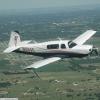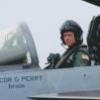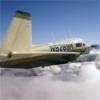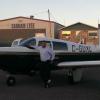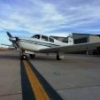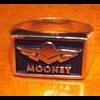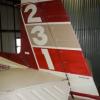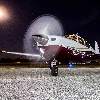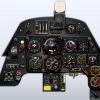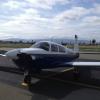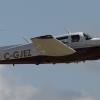Leaderboard
Popular Content
Showing content with the highest reputation on 12/20/2014 in all areas
-
It's $25 a year for Synthetic vision!!! Let me put it another way.....I was at the Jaguars/Titan football game last night. I paid $24.50 for two beers and a hotdog and that investment will literally turn into shit in another day or so (maybe sooner). I will gladly pay $25 a year for much improved obstacle awareness specially if that small investment has the potential of some day helping me avoid having to utter the words 'oh shit'6 points
-
Ahhhh, the good old days... A friend of mine did a "rotisserie" restoration on his 1965 Mustang convertible. When it was finished it was beautiful - practically perfect in every respect. The car was just as it was when it rolled out of the factory back in 1965. He let me drive it once. You know what the only flaw was with that car? It also drove and handled precisely the way it did back in 1965. There have been a lot of innovations in the basics such as electronic ignition, tires, brakes, handling. "driveability" etc. and we now take things such as airbags and antilock brakes for granted. It was great being able to drive a "like new" 50 year old car and I would love to own one, but not as my daily driver. I've got a 90 something year old friend who flew B-17s during WWII and was called up to fly Grumman HU-16s during the Korean war. It had been decades since he had been in a cockpit and a few years ago I took him out to the airport to see the Collins Proline 21 equipped Falcon 50 I was flying at the time. I plugged in the GPU and lit up the panel. He was astounded by all of the capability that we had in our glass panel - triple FMSes, dual IRSes, digital autopilot, VNAV, etc. etc. etc. He asked all kinds of questions about what it could do and how accurate it was. He just sat there looking at our panel then my old friend got very emotional and started talking about how many lives would have been saved back in the day with equipment like that. I guess those good old days just weren't quite as good as we might have thought. Advancing technology is a good thing. Keep it coming.4 points
-
What a breath of fresh air this thread is! WOW, I thought I was the only dinosaur worried about the pervasive intrusion of automation in the cockpit. While I am not against "automation" I am against mandated and institutionalized requirements for its use to the detriment of piloting skills. I come from and remember doing engine out ADF approaches in training in 727s to doing GA LPV GPS approaches today. Both can be done safely. Steam gauges and levers to to triple redundant autopilots with 600 RVR auto-land capability. The problem comes from relying on all the automation and not keeping piloting skills. As was mentioned, pilots turn on A/Ps early and turn them off late in the approach. This is mandated by the training policies of the airplane manufacture and the airline (Airbus in particular, yes I'm rated in the 320). A/Ps are generally more accurate and cheaper to fly with them on than off. Hence the cost issue. The real effect has been documented in the recent crash in KSFO of the 777. Way back when, the 757 was called the "widow maker" as the automation was almost undecipherable for many of the 727 drivers who were upgrading. And this was the first generation "glass" cockpit. Not near as complicated as today's glass and automation. The biggest most often heard cockpit comment then was "what the H@#$ is this thing doing now"! It's no different today except that many younger pilots have grown up with "electronics" making the transition much easier but the possibility of loss of hand flying skills more probable. "Buttonology" is the big issue today. Even back in the 757 days it took conscious effort not to be "head down" all the time playing with the box. No different today. Syn vision only exasperates the heads down issue by making watching TV more important than looking out the window. Yes, it happens. I have a friend who does contract training for many different entities and he sees it every day even with experienced pilots. He sees hand flying skills deteriorating rapidly as automation and GOOD autopilots take over more and more of the flying duties even in small GA aircraft. Add to the mix the limited amount of actual recent IFR flying hours for the average IR GA pilot and now they have a good A/P and TV screen and they blast off into maybe stuff they shouldn't and it spells trouble. The glass may give a false sense of capability and security. It is what it is. Glass and automation can be real good or real bad. It all depends on the mind set of the pilot in wanting to be as good as possible and that includes hand flying skills. Frankly I could write pages on this subject but I'll not bore you with my diatribe. There are some really smart pilots who have contributed to this thread.3 points
-
Welcome to the Poor Mooney Club.... I feel your Gain! While I'm ok with the old steam gauges I would not want to go back!2 points
-
The real story will be the one of setting up the Bill Gilliland Foundation to provide emergency therapy and funds to downed pilot's families. We are working towards that now, and I assure you, I have witnessed the need in GA for this. Jolie and my wife, both therapist, are involved. Stay tuned...2 points
-
I for one have purchased my last new car! I'm done with all the safety crap! You won't see me in a new BMW when I can't open the door to back up as it puts the car in park! I also can't stand these darn head rests that cause more blind spots than they're worth. Forget all the rest of the forced safety crap coming! My next car will be a pre 1975 that looks good and I can drive how I want to!2 points
-
I think all this is in the attitude of the driver/pilot. We have a generation of people (hopefully not me or you) who have developed the attitude that driving is so routine and easy that anyone can do it without effort or paying attention. Thus, it is OK to eat, drink, put on makeup, talk on the phone and text, while driving. And "hands free" devices don't help this. It is where your brain is. If we recognize that driving is potentially dangerous and requires our full attention, we would do better. The same applies to piloting. Having all the technology to help us is not a bad thing. Using all that technology is not a bad thing. But relying on it to the extent that we don't maintain the skills nor pay attention to what we are doing is a very bad thing. We must either turn off the A/P, look outside, and keep up with where we are on charts, part of the time, OR fly frequently with a conscientious safety pilot or CFI to maintain our skills. I really doubt that any of us are so complacent that we will program GPS and engage the A/P to fly an approach in IMC, while we drink coffee a carry on a conversation. But I can envision a scenario where the A/P is flying the approach and for whatever reason, it clicks off, and we aren't really well prepared to take over and complete the approach without a hitch. Maybe we ought to have our CFI randomly fail the A/P during the latter stages of an approach.2 points
-
Oh, thank goodness! Now I don't have to look outside anymore.2 points
-
Even if you don't get an IFR ticket, nothing says you can't try and remain IFR proficient. Get a safety pilot to fly with you and fly under the hood just in case you find yourself trapped. Even if you can't do it legally, if your aircraft is ILS capable, get someone to show you how to use it and practice it while VFR and VMC. You won't be able to file IFR, and I hope it doesn't encourage you to fly in more marginal weather, but being able to fly the ILS to get on the ground in marginal conditions might save your life. I try to fly two approaches under the hood every month. If I had two pieces of advice to offer the less experienced it would be: 1. Slow down. You don't need to intercept a segment of the approach at cruise speed. Plan to be below gear down speed before you hit the first fix. That way if you find yourself high you can lower the gear to help you get down. Slowing down also gives you more time to review the approach, program radios, change frequencies, etc. Instructions from ATC will come less frequently too. 2. If you are cruising along heading toward the approach and doing nothing but tracking straight and level, ask yourself if there is something I can do now that will make the approach easier later? Load the approach? Set up the back up navaids? Set a Comm frequency in the standby window? Listen to ATIS or ASOS? Study the approach with special attention to descent gradients? Just my opinion. Bob2 points
-
1 point
-
1 point
-
I've got a missile... More useful load than a S, 300hp, J airframe, costs less than an S and goes 170 true at 11.5 GPH lop at 9.5.... Kind of a half way between the two.1 point
-
So, if pilots of yore, were such great aviators, why did they die in such large numbers? Every technological device that we have come up with has been in a response to pilots screwing up. The screwing up goes all the way back to the Wright Brothers. This idea that if we all just flew like our great, great grand pappy did, with a bit of yarn on the windscreen and a wet thumb to the wind, we would all be so much safer is bull crap. Like it or not, the accident rates per mile traveled is way, way down from those of the good ol' days. Changes in systems, avionics, aircraft design and pilot training have made a difference. That is the whole point of learning about crashes, to see what can be done to make it better. Simply chalking every crash up to "pilot error", with the take away simply being to train harder, is counter productive. Sometimes it is a deficiency in the machine that the operator has to work with and an unrealistic expectation that a human being should preform with 100% accuracy all the time. Machines need to be designed to account for our sometimes sloppy behavior. An example of this is the machine shop of the turn of the last century. The machines had little to no safety guards. Wheels, belts, gears, blades spinning around at high speed with no way stop them easily and little to nothing to keep soft human parts away from harm. All was well as long as the human never screwed up and maintained accurate situational awareness 100% of the time. Sadly, workers were not able to do this and people lost their fingers, arms, eyes and even their lives on a fairly regular basis. Finally, at some point, people stopped blaming the operator and had a hard look at the machine. Today's machine shop and factory is magnitudes safer than those in the past. Serious injury is still possible, but has now become a rarity. Technology is good, it can save lives. Humans are extremely fallible and have proven themselves more than able to cost lives. The humans of yesteryear are no different than the humans today. If you don't believe it, check out the pilot fatality rates during both WWI and WWII, the percentage that died due to enemy action vs. those that died just screwing up is sobering. I don't get these anti tech rants at all. If you really want to fly just like Grandpa did, there are no FARs stopping you from doing that. If you buy a Mooney and it has glass panels, auto pilots and radios in it, rip it all out, save the weight and maintenance and fly just like it were 1920. It is permitted. If this is just bitterness about ADS-B compliance, remember, you only need that to go into radar controlled airspace (along with the already mandated radio and transponder) and above 10,000 ft. Fly from grass field to grass field just like Granddad did. I say bring on the tech.1 point
-
1 point
-
There's so much that can be done to an old car to update the ride and features. The big difference is that "I" get to choose what I want. There's too much safety being forced on us today. I like some of the new technology and think it can be good, but it's also created a lot of new problems for us to deal with. I have no problem with technology that I choose, but do have issues with technology being forced on me for my own good!1 point
-
You all talk about this new technology like it is some conspericy from "the machine". When in fact it is designed and marketed because the consumers can't get enough of it. People want it, can't buy it fast enough. Apple (and Garmin) are experts at figuring out what toys people want to play with. The only way these technology companies can stay in business is to sell lots of products. It is one thing to buy a new IPhone every year for a few hundred bucks. But another to buy a new avionics suit every decade for $30 AMUs It looks like the current paradigm requires that you set aside more per hour for the panel then the engine.1 point
-
Hi, During the holidays, I will be flying alot, weather permitting and I want to learn how to properly find my LOP setting trough the EDM 700 on my Rocket... I have read alot about it, read the EDM docs, Engine stuff and as well "Fly the Engine" by Kas Thomas that has chapters about my engine and LOP...( great ibook by the way ). After reading it all, in all honesty, I still feel a bit reluctant to really push on the lean side, maybe it's because I feel I don't have enough experience with it... I know it has been discussed here before, but I'm kind of looking on more of an experienced pilot's step by step on how to find the sweet spot on the rocket ( obviously running it under 75%, since it says no leaning over 75%).... Thanks very much and sorry if it has already been discussed so often here...1 point
-
My prop uses Aeroshell #5, as stated on a placard on the hub. Guess what I use on the landing gear? Yup, #5, and it works great. One tube does the whole airplane with a little left over. If my prop used #6, I'd put that on the gear.1 point
-
Just my opinion, I would stick with the Aeroshell products. I would use the #22 for the undercarriage. Not very familiar with #7. 5&6 are what your looking for......1 point
-
I write everything as I am told it while I am being told it - not as much to remember but to even understand. Because sometimes they give directions so fast, I find I can copy accurately without worrying too much about interpreting the meaning, and then only after read back, then I can interpret and process in my head more carefully what I am being asked to do. If I try to hear and understand at the same time then either remember or copy, then I find myself two steps back and loosing the tail end of a long set of instructions.1 point
-
I fly a normal pattern, with the same gear and flap procedures, for everything except an ATC instructed straight in approach. But I've been here in the land of 5000' runways all year, and I'm starting to lose my short field skills. Actually had to back taxi one stripe to reach the midfield taxiway the other day. :-(1 point
-
Need to be careful doing that... the last PPP I attended the instructor simulated an engine out to landing which resulted in a gear-up.1 point
-
#5 or #6 for the propeller is fine. If the propeller has Anti-ice Boots, #6 only. Servicing the Hartzell Y shank Propeller, is very straightforward. However, if a few steps are overlooked you will be headed straight to your nearest Propeller Repairstation #1 Each propeller blade has its own bearing pack, which is segregated from the others. On each side of the blade there is a greese fitting. One of these fittings have to be removed in order to let air an greese out, as you pump it in the opposite side. #2 When you remove the fitting use a toothpick or a piece of .041 wire the clean out any hardened greese. In the winter time I prefer to just add a couple pumps. Very slow pumps. In the summer time when the temp outside looks a lot like your CHT/EGT I will slowly purge all of the old discolored greese out. But you wanna be really careful. You want the greese to come out of the opposing side of the hub at a rate of 1 to 1. If it stops coming out, an your still pumping it in, then your filling the center of the hub with greese, or pushing it past the blade Quad seal... Hope this helped you.1 point
-
I think I flew more marginal VFR before my IFR ticket than after. The training exposed some assumptions that I no longer make; and... I've never heard anyone say it was a waste of time. Staying current is a challenge but the essential training of picking a heading and an altitude and sticking with it until making an active decision to pick another heading and altitude and making those empirical decisions saves lives and gives you something to do rather than the brain overload that occurs when you're unable to prioritize and stay on the same page as ATC. One caveat: I have a G500 with AHRS, synthetic vision, a 530W and 430W, and a KFC 225 autopilot with altitude preselect, etc.---I think the world of those IFR pilots before me that were/are comfortable in IFR with the minimal steam gauges and needles--I just can't imagine developing a comfort level without modern equipment AND staying current. It may be too basic for the more experienced members here to think they have to "say it out loud" but as any CFII will tell you during IFR practice: "DAMMIT, PICK A HEADING AND AN ALTITUDE AND HOLD IT!--await further instructions from ATC and remember the two words "emergency" and "unable."1 point
-
I haven't either but at $2 a month I'm gonna give it a go! Foreflight has always done things to a higher standard (IMO), so I believe it will be on par if not better than similar applications??? Time will tell but I'm glad they are finally releasing it!1 point
-
What I saw at Oshkosh this year was the Stratus 2 linked to a new Appareo mode s transponder with built-in WAAS GPS source. Intended to be a one box solution for both ADS-B in and out. The stratus 2 could be permanently installed underneath the panel near near the transponder because it will now be powered by and receiving the GPS information from the transponder itself. The Stratus would be relegated to transmitting the traffic/weather/GPS/AHRS information to your iPad.1 point
-
I am surprised to see so many posts from Mooney pilots who do not have or plan to have an instrument ticket. A Mooney is a cross country plane. Cross country VFR is almost a contradiction in terms. At least in the Eastern part of the country. Sure, you can go on $100 burger runs or to kinda local fly ins to return the same day but if you go somewhere even for a couple of days you are very likely encounter weather going or coming. I seldom, almost never, fly anymore where I have to shoot an approach. I'm retired, I don't have to be anywhere. But even so I note I have logged over 11 hours IMC this year, out of 80 hours TT. Sometimes that was just a climb or descent through a layer sometimes more than that. I've logged 14 instrument approaches this year, all practice in VFR conditions. Years ago, when I was working and traveling for business, I flew in almost any kind of weather except known icing. I did not consider that activity particularly dangerous, certainly not compared to long distance driving in bad weather.1 point
-
When I consider the equipment of the aircraft and the fact that the pilot was an instrument rated commercial pilot, then look at the erratic ground track, it makes me wonder if he was partial panel, but for some reason didn't want to tell anyone. Partial panel can tax even a proficient pilot. It's a strange situation.1 point
-
1 point
-
You're not going to get an argument from me about training. I have been instrument rated since 1993 and you will find my logs full of IPCs whether I needed them or not. In fact for the past 4 years, I have opted for IPCs every 6 months regardless of my flight currency. When I went glass two years ago, it took me a while with and without an instructor to start flying from the front seat again. And that was in a plane I had owned for 21 years! Training and risk management are the most important factors that can prevent you from getting into this kind of situation, but understanding the tools you have at your disposal are equally as important to get you out. Why install them if you don't use them? The point of my last post was to understand with the equipment he had, why wasn't it used? Based on the flight paths and ATC tape, it looks like he was hand flying it. If you have hand flown 4 approaches, why not fly it coupled? The LPV RWY35 at KHQZ can be flown to 250', well below the reported 600' ceilings. I have flown dozens of LPV approaches both coupled and by hand. Unless he had a mechanical issue, using the coupled autopilot should have allowed him to monitor the approach. Something prevented him from being in a position to land on those multiple approaches.1 point
-
This is primarily a value statement... If the new technology provides value to the customer.... If the pilot can afford the new technology... More is better... W&B are limiting factors. $ are limiting factors. Safety, speed and efficiency are strong driving forces... Don't fall for having the latest technology, it will be out moded by something just around the corner... Best regards, -a-1 point
-
The simple answer is enough is never enough. And if the technology is effective, and the government doesn't prevent it, it will prevail. And we will all curse it if it is mandated and not terribly effective. Some might argue ADS-B falls into the later category. But they might change their mind if it included an auto anti mid air collision function.1 point
-
As long as we're discussing the issue of member info, I'd like to put in a plug for posting basic info about the model Mooney one flies and some basic geographic location. I don't know how many times a model specific question or situation is posted, but without knowing which year and model, how can we help? Same with geography. If a guy is having problems with oil temps, it's helpful to know he's based at the North Pole. :-) So regardless of what you call yourself, posting model, year and some general location would be beneficial for everyone. Most of the "regulars" do this, but many posters do not.1 point
-
Oh but it's nice having our microwave ovens, remotes for the TV, Kuregig coffees makers ..we've always had bad haphazard drivers, pilots etc. it's not the tech. Fault try the laziness of our ( well my generation has passed) generation..the kids play with electronics cell phones..we had to go out and play until the street lights came on...a lot of the problem is the laziness that's been created maybe now because both mom and dad have to work to buy all the fancy stuff who knows..when I was a kid. Socks, undies and one toy for Xmas I was a very happy camper.. Look around and can that be said today...it all funnels down maybe a mirror should be in our Xmas basket... Now that's ranting.1 point
-
Two reasons for this: 1) they don't look or pay attention; 2) they drive a 4x4 SUV with poor rear visibility around town, never leaving asphalt, never engaging four-wheel drive, and only needing a sedan, because "it looks cool." Just like my riding mower has a button that must be pressed to back up when the blades are turning, because people were running over their kids. Turn your head and look behind you! It's not that hard. Oh, the "push to back up" button that "prevents me from running over people behind me" is under the steering wheel. Look down, push button, and still back up over people! Government is once again saving us from ourselves. The lane drifting sensors will soon be credited with saving lives, too, and for the same reason--people are too stupid and distracted to actually pay attention to what they are doing. I'm convinced it happens to pilots, too, and we read about those who are unable to recover in time. Pay attention! Fly Safe! <off of soapbox>1 point
-
Normal for the spark plug probe...you should swap it for a piggy-back probe that will feed the factory CHT and the JPI and then the issue goes away. Sent from my VS985 4G using Tapatalk1 point
-
I would say that there is plenty left to do in the technology area of aviation and space propulsion. We still use heat engines since the times of first locomotives. Transportation (land, sea, air & space) breakthroughs are intimately related to propulsion devices. In the space arena NASA is going back to the old Apollo (Orion) capsule with rockets. José1 point
-
1 point
-
One thing I did notice on the specs is max HP for all models is at @ 3200RPM a little fast for our propellers at least 2 bladed types. Maybe a 4 blade design about 4” top 5” less in diameter might work and would give us increased prop to ground clearance.1 point
-
Very nice Peter - I know what improvement I want to tack into my annual this upcoming Feb.1 point
-
I'm not sure I'd agree with this. Consider: Oil leaks Cracked cases Camshaft failure Exhaust valve failure Oil consumption Fouled spark plugs Need for pre-heat When is the last time you had a problem with the internals of an auto engine? I'm convinced that a clean-sheet design with modern engineering and materials could produce a vastly improved aircraft piston engine.1 point
-
I thought it would surely need to include LOP/ROP, Camguard, flap usage, grass fields, SEL night IMC flight and mutt muffs . . . Seriously, mark my vote for Mooney Down in Indiana. It's a sad story with far-reaching effects, but at least we have Mike still here, and he can provide unique insight into what happened. His story is one of triumph. I'm waiting for the official report, and hope to hear Mike's full story afterwards.1 point
-
Personally, I think the thread is Non-Mooney spam, but whatever....1 point
-
Thought I might as well chime in also. I just went through an extensive refurb on my 77 J. I agree with Jose that getting your money back from a refurbished J would be a pipe dream. Realizing what is currently out there in the resale market and looking what I have now I have to learn to be happy with my investment. I know what I have and I don't have to second guess another owners work. I get great comments from Mooney lovers and other aviation folk about my investment. My justification for this expense is that this is the closest I will get to a new Mooney, and this Mooney was rebuilt for my benefit and for no one else.1 point


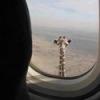


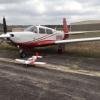

.thumb.png.7c67574d7b28f67b0b4a17760919b1ac.png)

